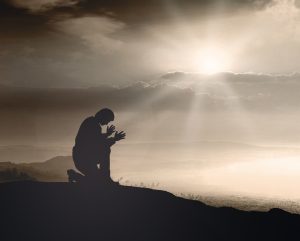Grief is a life long process. Individuals deal with grief or loss to some extent on a consistent basis throughout life. The more significant losses remain with individuals and the ability of the individual to process the loss, understand it, incorporate it and exist with it are key to normal grieving styles. Those in the field of grief counseling on both the non clinical and clinical side need to sharpen their talents in helping individuals process the loss in a healthy way and be able to find continuing meaning in life. This involves not only understanding the various therapies on the more broad spectrum of treatment but how to micro handle daily sessions with individuals with minor positive interventions. Hence while one may employ CBT as the broad approach to help one heal, the daily encounters and how these encounters occur, allow the overall therapy to take root finds its productivity in certain skills and abilities. Some of these skills deal with how the grief counselor reframes thoughts, repeats words, shows empathy, or other verbal strategies to help emphasize certain parts of treatment, but positive interventions during treatment involve notation of certain parts of the journey within the inner dynamics of whatever treatment. As the person tells their grief story, finds self, relationship, memories and continuity within the grief story of one’s life, the counselor plays a key role in highlighting these points.

Junietta Baker McCall’s text “Bereavement Counseling: Pastoral Care for Complicated Grieving” lists a variety of positive strategies and helpful interventions in chapter 7. She discusses how the therapists or grief counselors can help guide the person in the person’s grief story, sense of self and relationship, and the building of memories and continued continuity in healing through various prompts and interventions during sessions. These insights go far deeper than a general discussion of a therapy, or utilization of counselor skills, but look at certain points in therapy at a much more micro level where the grief counselor can better help the person through a particular session and goal. She states that specific strategies and interventions can be “used to respond to grief … and suggest possible ways to engage the grieving individual (McCall, J. 2012, p. 223).
Strategies in Narrative Therapy
Grief Narrative is a therapy within all overall models of CBT, Psycho Dynamic or Humanistic approaches. It is the re-telling of the person’s loss and trauma. It is where everything begins in the healing process. It permits the person to vocalize the inner feelings and share the loss. It permits communication and healing and allows for reframing and eventual change in understanding the place of the loss within the person’s life. Obviously for it to be successful, depends not only the story being told but how the grief counselor is able to guide the individual.
Counselors should utilize the story as a way to develop a caring model relationship that enables them to understand their client. The story needs to be encouraged to be told no matter the sadness and shared. In doing so, the grief counselor should grant the person space and time to comfortably tell the story. The grief counselor should repeat words that need repeated for the person to hear his/her own words echo, as well as show empathy and interest in the telling of the events. In this way, the grief counselor shows engagement and can later model future healthy grieving models (McCall, J. 2012, P. 225).
Throughout the story, it is important for the grief counselor to accept the therapeutic nature of the grief story. What matters most is the here and now of the story, not what others think. At this moment, the important part of healing is the subjective truth of the story to the person. How does the person feel at this moment in the here and now (McCall, J. 2012, p. 226). Remain empathetic throughout the story and remain an advocate for the person as the story continues and upon completion of the story within the session, ask the person if the story has been told to the person’s satisfaction. Upon completion of the story, share observations, address emotions and remain honest in assessments with possible referrals or information to help the person continue the story for next time (McCall, J. 2012, p. 228-229).
With guidance, the story’s initial subjective truths can correlate with objective reality. The person may recognize various issues within the story, such as blame, or guilt, or anger that once existed that no longer should exist. In addition, one can begin to reframe the loss within an objective truth as the person heals.
Regaining Self and Connection
Within the grieving process, many times, the person loses sense of self. One may have had such dependence upon the other that one can no longer function. Maybe one identified as a spouse, parent or position and when these things are taken, a person loses this important self image. Again, obviously various CBT or Humanistic Approaches to help cognitively reframe or heal broken images can be utilized, but it is within the smaller bits of communication with the bereaved, where one moves from one point to the next.
It is critical to address and measure a person’s sense of self within sessions. Asking questions that relate to a person’s self image and how a person may feel since the loss. Maybe the person is withdrawing from hobbies or no longer finds interests. These are important notations that can help one measure if one’s sense of self is damaged due to the loss. McCall recommends utilizing the term loneliness not to just mean when one is alone but a feeling that can occur in any circumstance. In addition, she uses the term isolation to refer to any inner experience to withdraw from others (2012, P., 237-238). The grief counselor while helping the person’s self re-find itself, needs to also help the person find relationship with others. The counselor can describe ways for the bereaved to reach out to others and in what ways
Reclaiming Memories and Meaning
Grief healing occurs when old memories are properly collected, understood, and properly recalled with the present and possible future. One is able to find meaning of the loss, no matter what it was, and able to tie the loss together within the chapters of one’s life. The loss has meaning but does not define completely the self or person. The person continues with the loss, albeit in a healthy way. The person is able to build new relationships and write new chapters, despite the existence of the loss.

In helping individuals, whether through CBT or Humanistic Approaches, grief counselors can pay close attention to particulars and emphasize and carefully monitor certain aspects of this transition during sessions. It is important to see the gradual transformation of the bereaved throughout the process. A good grief counselor will see when certain parts are not lining up and where to intervene and help the client proceed to the next important step of adapting to the loss.
The grief counselor should utilize all mind, body, soul connections tied with ritual and belief. These ideals within the person can play key roles in anchoring the person with meaning in the loss. It is also at this point to ensure the bereaved understands the value of working through grief and that while the first step is to survive the loss, there is so much more beyond just surviving (McCall, J, 2012, p. 252-256). McCall points out it is crucial for the person to understand that surviving the loss is vital to growth but it still not quality of life. As the person recognizes this survival, the person will start to set aside other destructive maladaptive coping habits. These habits need addressed in any counseling.
The grief counselor can help the person progress by asking the client to discuss how it was before the loss. In addition, discuss current accomplishments, as well as offer encouragement. Ask the client to fantasize what one hopes life to be like in the future (McCall, J. 2012,. p. 257).
In remembering, teach clients that memories can be unbearable and that is OK. Ask the client what the memory means to him/her. Let the client know some events make no sense in life and cannot be made into order. Let the client know he/she cannot change the memory or event, but he/she can learn to grow with it. Use other examples of similar stories of how others coped, or present ways to help put an intrusive thought to the back mind. Helping individuals focus on issues when it is safe instead of intrusive and inopportune times helps the person handle emotion and bad memories (McCall, J. 2012, p. 260). As time progresses, help the person reframe bad memories for more positive outcomes and valuable ways to see the past so one may move forward to the future.
Finding meaning in the present and future also means recognizing healing. So many times, one only focuses on the trauma, but it is equally important to focus on healing and transformation. McCall recommends to help the person focus on the mystery of life. Let clients know that they have control of their lives and can dictate what the future holds. Help clients identify healing moments without guilt. Let individuals know beyond being aware of healing moments to embrace them, pray for them , hope for them and practice gratitude when they occur (2012, p. 265).
It is interesting to note that Aaron Antonovksy famous for his theories on “salutogenesis” which emphasizes health as something more aligned with well being than focus on pathology speaks of the importance of coherence in health. For well being and health to exist, he points out three key elements that I feel are important to reframing grief and finding meaning. He first lists comprehensibility as the belief that things/stressors/loss happen in an orderly fashion. Obviously, world views can be shattered with grief and any type of well being is destroyed initially after loss. Secondly, Antonosky points out manageability as crucial to well being in the belief that one has the ability and skills to cope with stressors or loss. In stress, when an organism is over-whelmed, then breakdown begins, so it is not surprising that Antonosky would point out that for well-being, one must be able to manage stressors or loss. Finally, he lists meaningfulness as source of coherence and well being. Meaningfulness is what defines a person’s existence and why one pushes forward. In grief theory, when meaning in life is loss, then well being suffers. It is the purpose of grief counseling to help the person adjust to loss by again finding meaning in life with the loss.
Conclusion

Sense of meaning is critical to overall health. Without a sense of meaning, health itself can suffer. So when sense of meaning is restored and connected with past, present and future, then true adjustment can occur. Grief Counselors play a key role in helping individuals regain this balance and sense of health. It is sometimes in intense sessions where minor observations and interventions occur that grief healing occurs. It does not occur immediately, but results in multiple months and sometimes years, helping the person adjust to the loss in a healthy way.
Please also review AIHCP’s Grief Counseling Certification. The program is online and independent study and open to qualified professionals seeking a four year certification in grief counseling.
Reference
McCall, J. (2012). ‘Bereavement Counseling: Pastoral Care for Complicated Grieving”. Routledge
Additional Resources
“Salutogenesis”. Wikipedia. Access here
Sutton, J. 2018. “10 Grief Counseling Therapy Techniques & Interventions”. Positive Psychology. Access here
“The psychology of grief – applying cognitive and behaviour therapy principles”. InPsych 2011 | Vol 33. APA. Access here
Kelly, L. (2021). “7 Grief Therapy Techniques for Coping”. TalkSpace. Access here




















